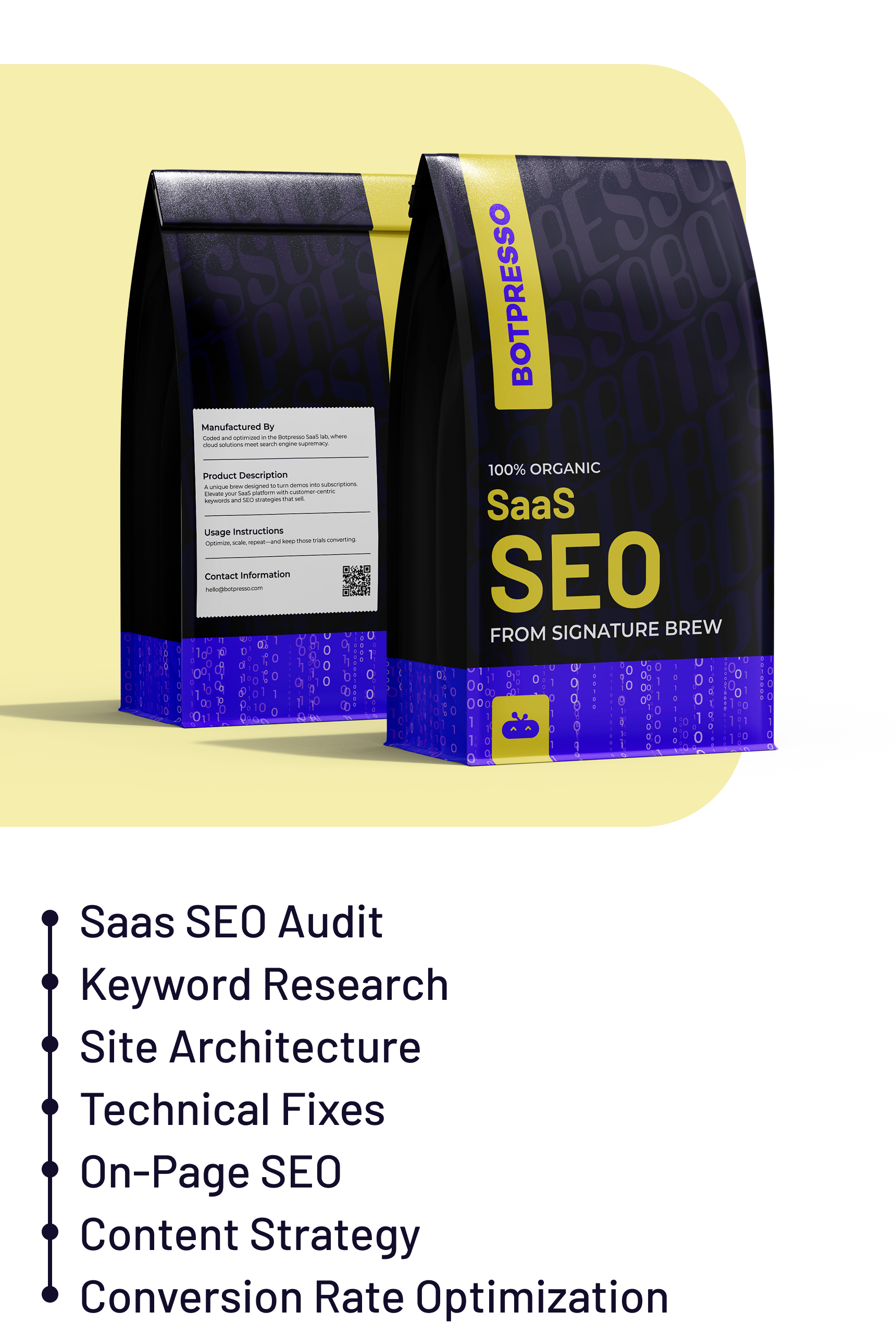SaaS SEO Agency
Reach the right people at the right time, attract qualified leads, and skyrocket your revenue

Brands That Trust Us












Why Brew SEO for Your SaaS Company?
SaaS SEO is not just about stuffing keywords into your website. You need to address your customer pain points, show them why your product is the best solution, and make sure your website offers a good experience. Buying SaaS products is a big decision, especially B2B SaaS products. Hence, you need to nurture every lead carefully. Everything from content to website design, to optimization, needs accurate planning and implementation.
Beans to Blend A Perfect SaaS SEO Mix


Brew SEO for B2B SaaS: Trust the Process
Here’s our step-by-step process to make your website discoverable, your brand credible, and your revenue multiply
Understanding your Signature Roast
Our SEO Consultants for SaaS begin by understanding your product, business model, and target audience to craft a winning SaaS SEO strategy.
Perfecting the Taste for Your ICP
We identify your Ideal Customer Profiles— their pain points, needs, and decision-making process. This helps us gain leads, which are highly likely to convert.
Sourcing Opportunities Like Fine Beans
Next, we do in-depth keyword research to understand the search behavior of your audience and also understand the competitor landscape.
Quality Evaluation
We audit every component of your website: content, technical issues and user experience in your SaaS SEO audit. Then, create a custom growth plan that is unique to your website.
Brewing Up A New Structure
Once the fundamentals are in place, we rebuild a robust site structure to offer an intuitive and helpful user experience.
Adding the Flavour of Content
We craft unique, quality content that solves user problems and targets users at different stages in the buyer journey. This is the opportunity to present your brand as the ideal solution.
From Sip to Sale: Conversion Rate Optimization
Our SaaS SEO consulting goes beyond rankings—we focus on real business growth. We pour in our expertise to ensure your visitors turn into paying customers.
We Optimize SaaS Websites Across All Platforms







The Indicators of SaaS SEO Success

Boost in MQLs
SEO helps pour in more marketing-qualified leads of interested buyers at a reduced CAC. Leads through SEO also have a higher closure rate
Reducing CACs
SaaS SEO should drive sustainable revenue by scaling organic traffic and reducing acquisition costs
Increasing Traffic
The daily, monthly, and quarter traffic should increase. This eventually leads to higher conversion and increased revenue
Ranking on SERPs
The more we work on SEO for your SaaS website, you will notice an increase in the number of keywords ranking high on SERP
Why Choose Us
We Turn Visitors Into Customers!
Research Backed Strategy
Every plan that we present for your growth is backed by solid research, data and experience.
We Experiment A Lot!
What works best for your site? Well, let’s find out. We dare to experiment, analyze, improvise and win. Every single day!
We Automate At The Speed of Light
With Python and AI as the Swiss Army knife of automation, our SaaS SEO experts instinctively harness speed and scale.
We Help You Go Global
From choosing the right markets to launching and optimizing your site in every regional language, we’ve got you covered!
We Do Not Just Blend SEO
Revamping your site or introducing a new feature? We'll gladly pour our expertise into it. We love adding value.
We Automate At The Speed of Light
Python and AI together are a Swiss Army Knife for automation, which our eCommerce SEO consultants leverage the best.
We Dominate the World of Search Marketing


















Gaining Clients' Trust, One Coffee At A Time
Parag Jain
Co-Founder and Chief Growth Officer | Headout

Innu Nevatia
Co-Founder I Zwende

Edith Yeghiazaryan
Senior Technical SEO Manager | momox

Deepak Maurya
Founder | TheRugDecor

Jorgo Costellenos
CMO | Tripaneer




















Our Finest Roasts: SaaS SEO Wins
You could be one of Them


